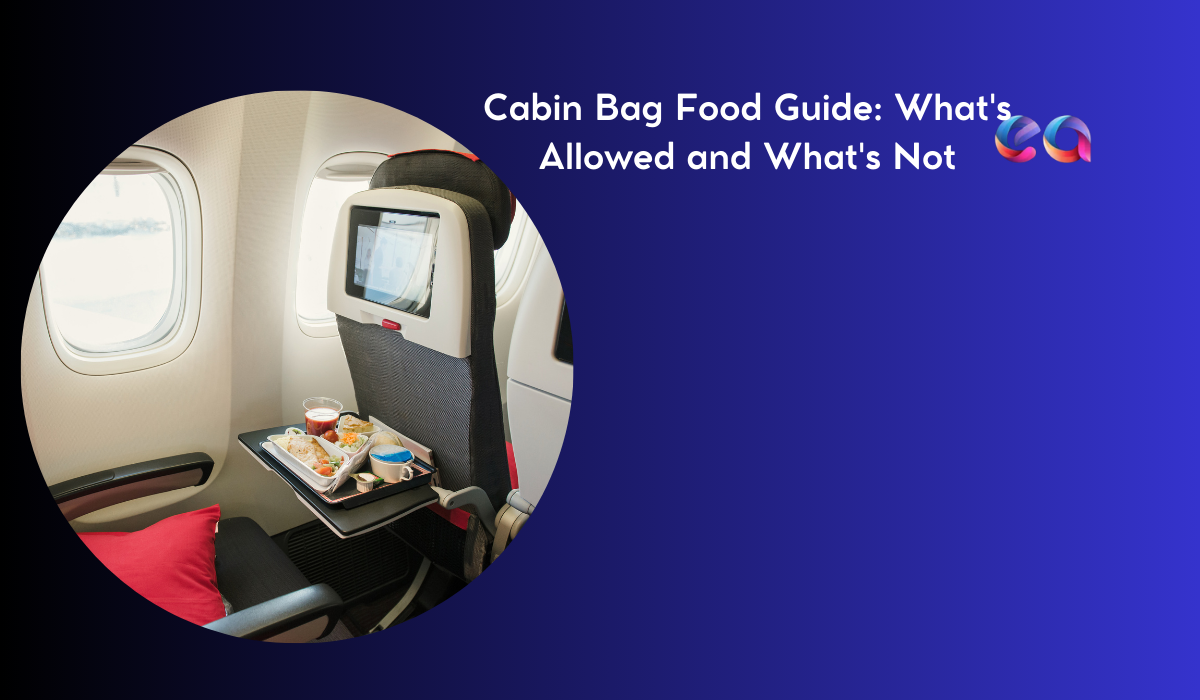
Traveling by air can be an exciting yet overwhelming experience, especially for first-time travelers. One common concern is what food to pack in your cabin bag. This guide will provide you with essential tips on what foods you can bring, what to avoid, and how to pack them for a smooth journey.
Table of Contents
What Types of Food Are Allowed in Cabin Bags?
When it comes to packing food for your flight, there are several options that are both convenient and allowed by most airlines:
- Non-Perishable Snacks: Granola bars, nuts, dried fruits, and pretzels are perfect for traveling. They don’t spoil easily and are easy to pack.
- Fresh Fruits and Vegetables: Apples, carrots, and celery sticks are excellent choices. They are healthy, refreshing, and can help you stay hydrated.
- Sandwiches: Opt for simple sandwiches with non-perishable fillings like peanut butter and jelly. Avoid mayonnaise or other perishables unless you plan to consume them early in your trip.
- Cheese and Crackers: Hard cheeses are less likely to spoil and can make a satisfying snack when paired with whole-grain crackers.
Foods to Avoid in Cabin Bags
While it’s tempting to bring your favorite foods, some items are best left at home:
- Liquids and Gels: TSA regulations limit liquids and gels to 3.4 ounces (100 milliliters) per container. This includes soups, yogurts, and even some sauces.
- Strong-Smelling Foods: Foods like tuna, garlic-heavy dishes, or certain cheeses can be offensive to other passengers. Stick to odorless or mild-smelling items.
- Perishable Foods: Items that need refrigeration, such as dairy products and certain meats, should be avoided as they can spoil during your journey.
- Messy Foods: Foods that can easily spill or crumble, like dips or crumbly pastries, can create a mess in your bag and are best avoided.
How to Pack Your Food
Proper packing can ensure your food stays fresh and secure:
- Use Airtight Containers: This helps prevent spills and keeps your food fresh. Reusable silicone bags or containers with tight lids are great options.
- Consider Insulated Bags: For items that need to stay cool, use an insulated bag with a small ice pack. Remember, the ice pack must be frozen solid when passing through security.
- Pack Strategically: Place heavier items at the bottom of your bag and more fragile items on top to prevent crushing.
- Label Your Food: If you have multiple containers, labeling them can help you quickly find what you need during the flight.
Airline and International Regulations
It’s crucial to be aware of specific regulations regarding food:
- TSA Guidelines: Familiarize yourself with TSA rules on what food items are allowed in carry-on bags. Visit the TSA website for the most up-to-date information.
- International Restrictions: If traveling internationally, check the regulations of your destination country. Some countries have strict rules about bringing in certain foods, especially fresh produce and meats.
- Airline Policies: Different airlines may have specific policies about food in cabin bags. Check with your airline before packing.
Practical Tips for Managing Food on a Flight
- Stay Hydrated: Airplane cabins are often dry, so drink plenty of water. Bring an empty bottle to fill after passing through security.
- Eat at Regular Intervals: Avoid getting too hungry by eating small snacks throughout your flight. This helps maintain energy levels and comfort.
- Dispose of Trash Properly: Keep your space clean by disposing of food wrappers and containers properly. Use the provided air sickness bag if necessary.
- Bring Wipes and Napkins: Having some wet wipes and napkins can help you clean up any spills or crumbs.
- Avoid Overeating: Overeating can cause discomfort during your flight. Eat light and save the heavier meals for after you land.
Additional Tips for First-Time Travelers
- Check for Food Allergies: If you have food allergies, ensure that the snacks you bring are safe. Pack an EpiPen if necessary and inform the airline crew about your allergy.
- Prepare for Delays: Sometimes flights get delayed, so pack a little extra food just in case. This can prevent you from getting too hungry if your flight is extended.
- Consider Fellow Passengers: Be mindful of those around you. Avoid foods that can cause strong allergic reactions, like peanuts, and keep your eating area clean.
- Bring Mints or Gum: Cabin pressure can sometimes cause your ears to pop. Chewing gum or sucking on mints can help alleviate this discomfort.
Conclusion
Packing food for your flight doesn’t have to be stressful. By following these guidelines, you can ensure a comfortable and enjoyable travel experience. Remember to check airline and international regulations, pack strategically, and choose foods that are convenient and considerate of your fellow passengers.












